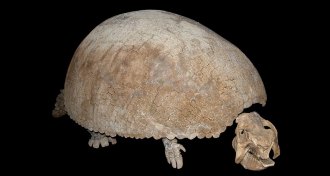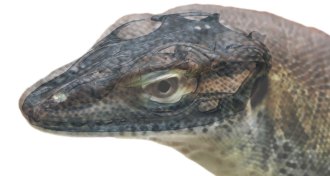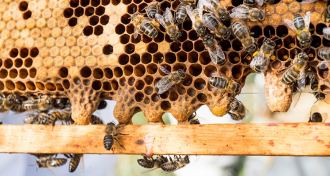Life
Sign up for our newsletter
We summarize the week's scientific breakthroughs every Thursday.
-
 Microbes
MicrobesThis material uses energy from ambient light to kill hospital superbugs
A quantum dot–powered material could help reduce the number of hospital-acquired infections, including those with drug-resistant bacteria.
-
 Anthropology
AnthropologyFinger fossil puts people in Arabia at least 86,000 years ago
A desert discovery suggests that Arabia was an ancient human destination.
By Bruce Bower -
 Life
LifeFossils sparked Charles Darwin’s imagination
Darwin’s Fossils recounts how finding extinct species in South America helped Charles Darwin develop his theory of evolution.
By Sid Perkins -
 Animals
AnimalsIn a colony, king penguins behave like molecules in a 2-D liquid
Positions of king penguins in a breeding colony resemble molecules in a 2-D liquid.
By Dan Garisto -
 Neuroscience
NeuroscienceHuman brains make new nerve cells — and lots of them — well into old age
In humans, new neurons are still born in old brains, new research suggests.
-
 Paleontology
PaleontologyThis ancient lizard may have watched the world through four eyes
A lizard that lived 50 million years ago had both a third and a fourth eye.
-
 Paleontology
PaleontologyReaders debate dinosaur designation and more
Readers had questions about the dino family tree and Venus' habitability.
-
 Animals
AnimalsFlying insects tell tales of long-distance migrations
Researchers are asking big questions about animal movements and pest control by tracking tiny insects in flight.
-
 Genetics
GeneticsBirds get their internal compass from this newly ID’d eye protein
Birds can sense magnetic fields, thanks to internal compasses that likely rely on changes to proteins in the retina.
By Dan Garisto -
 Anthropology
AnthropologyArdi walked the walk 4.4 million years ago
Ancient hominid evolved upright stance without sacrificing climbing ability.
By Bruce Bower -
 Animals
AnimalsHow honeybees’ royal jelly might be baby glue, too
A last-minute pH shift thickens royal jelly enough to stick queen larvae to the ceiling of hive cells.
By Susan Milius -
 Animals
AnimalsThe truth about animals isn’t always pretty
The Truth About Animals digs up surprising stories about sloths, pandas, penguins and other wildly misunderstood wildlife.